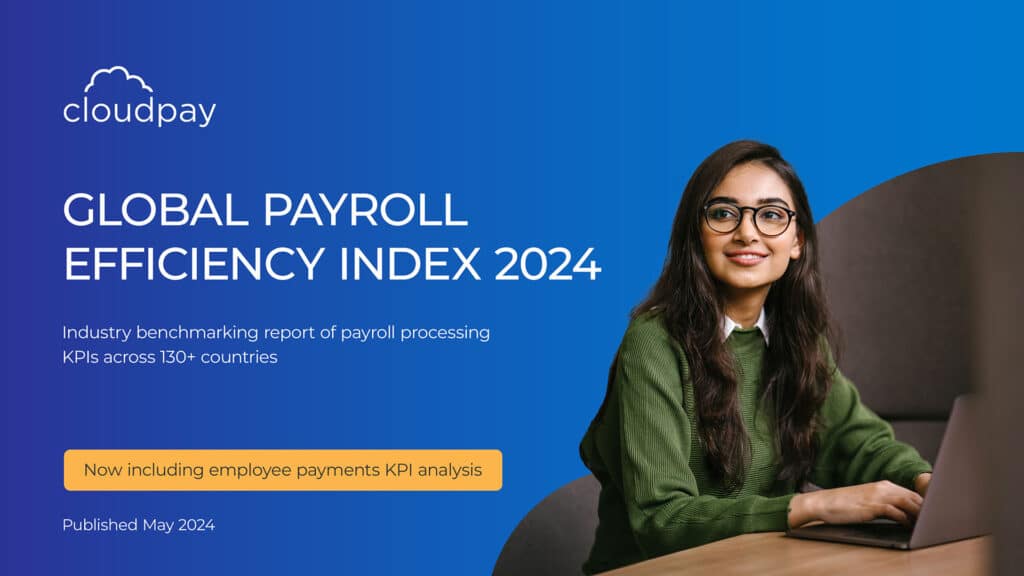When building the business case for global payroll, much rests on the potential return on investment (ROI).
While cost should not be the only consideration in the move to a global payroll solution, as not all benefits show up clearly on a balance sheet, it is ROI that so often drives the conversation at boardroom level.
Only by understanding the true costs of a decentralized payroll approach can you assess the real financial value of any future improvements. For those considering a global payroll transformation, this blog will demonstrate how to calculate an accurate comparison between your current and potential payroll costs.
We’ll look at the importance of undertaking a value assessment with your prospective payroll vendor, identify where savings can typically be made, and assess just how quickly a global payroll solution might start generating a return.
The first step is noting the ideal list of key data inputs required for a value assessment. If not all data is available, assumptions can be made to ensure the evaluation is still valid — however, this will impact the overall analysis. The key data required includes:
- Countries in scope
- Payroll frequencies
- Entities by country
- Number of employees in each country
Building the internal business case
In most organizations, HR and payroll teams can recognize the value in global payroll straight away. As the people on the front lines, carrying out the work day-to-day, they see the opportunities for process optimization up close and personal.
The challenge lies in selling that vision to the C-suite — the CFOs and other chief decision-makers who don’t live and breathe payroll every day.
These key stakeholders typically deal in facts and figures. They may see an invoice from a payroll provider in a specific country and base conclusions on the bottom line, too far removed from the payroll process to recognize the hidden costs that add considerably to the payslip price. The cost, for example, of their own staff moving data to and from that provider.
Conducting a value assessment of global payroll can help uncover these hidden costs, looking beyond supplier invoices to reveal the uncosted activity that goes on within the organization to make payroll work.
The assessment is a challenge in itself — namely, gathering the right information from across the enterprise to make your business case accurate. It will take time and effort, but your prospective global payroll vendor should be able to help with some of the heavy lifting.
Avoiding the common pitfalls when building your business case
In trying to calculate ROI to build the business case for global payroll, organizations will typically compare current and potential costs by using their current ‘per payslip’ price as the benchmark.
If you’re currently paying $10 a payslip, and your potential global payroll solution works out to $12 per payslip, resistance is to be expected. But the price on the invoice shows only what you pay — not what you save.
Invoice values fail to show the efficiencies gained from standardization or the elimination of manual processes, all of which would save considerable money across the business.
The per-payslip figure also fails to take into account the level of service you’re receiving. With existing local providers, there may be additional fees for statutory filings or for treasury services. These figures need to be factored in for a fair comparison of the service and costs you have today versus what you could expect from an optimized global payroll solution.
The true cost and potential savings
For the global payroll vendor to help you uncover the true cost of your current approach, they’ll need to know things like the country breakdown, the payroll frequency, the headcount, and the number of legal entities. All are normally easy to identify.
What’s typically harder for the vendor to get, and you’ll need to provide as accurately as possible, is the number of FTEs processing that payroll. This must also account for any time taken by other non-payroll FTEs who support the process in some way, be they HR staff transferring information or IT team members providing system support.
Ultimately, the global payroll vendor is seeking to reduce the time each FTE spends on payroll. If team members in Finance are performing payroll tasks on the side, how much time can be given back to their regular duties once the vendor picks up payroll?
As well as saving time, the vendor is also looking to reduce payroll administration costs and to avoid duplicate work through integration.
Drawing in data through advanced integrations (as opposed to spreadsheet exchanges and other manual methods of supplying data) not only ensures a cleaner data set, but limits the opportunity for payroll errors.
Integration offers further opportunities for efficiency, so vendors may wish to explore the potential for systems integrations between HR and payroll, or time and attendance systems. Consolidated, centralized reporting and analytics tools, meanwhile, afford further tangible benefits — not least the ability to finally get an all-encompassing view of your global payroll costs.
When it comes to ROI, what does ‘good’ look like?
When you conduct a value assessment with your potential payroll provider, you would expect to see savings. Without one, the business case would be dead in the water. But just how significant a savings should be expected — and how quickly will the new solution have paid for itself?
Savings can be identified both in terms of time and cost. In terms of the reduction in time spent by FTEs on your payroll, research shows payroll teams can save up to 40% of the time spent on automatable activities.
When added to other efficiency gains, this could lead to an overall reduction in payroll administration costs of as much as 65%, based on assessments conducted by CloudPay. Even taking into account the upfront costs of implementation, this means the solution has normally repaid the business by the end of year one.
These savings are typically realized in the following key areas:
- Reduced FTE time spent on payroll processing activities by 45%
- Reduced payroll administration costs, such as by removing duplication
- Reduced payroll leakage below 2.5% (a higher leakage rate is usually the result of no policies, a lack of standardization, and/or low technology adoption)
Moving forward across a typical three- to five-year contract, 65% savings on annual payroll costs represents significant ROI for the business.
Why conduct a value assessment?
While many organizations will seek input from a global payroll vendor following a notable failure of current payroll processes, it can be sensible to undertake a value assessment even when payroll is running largely error-free.
There may simply be a sense within your organization that your current approach to payroll — whereby everything’s done locally — leaves significant room for improvement in terms of efficiency.
Understanding the true costs of your current operation will reveal the value those process improvements could have.



